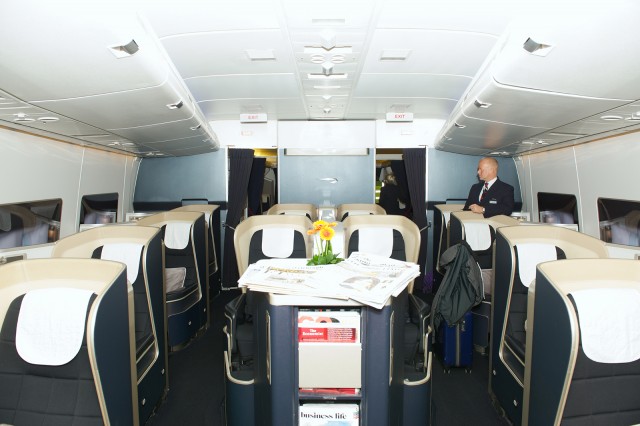
The First Class cabin of a British Airways 747-436 (G-BNLK) – Photo: Bernie Leighton | AirlineReporter
The entire reason I ended up in Poland was because my travel thought process doesn’t work like that of a normal person. If I see an enticing airfare, on a new airline or a new product, I tend to book it, then figure out the details later.
In this case, I had discovered that British Airways was offering some reasonable fares in their most recent Prime First product across the Atlantic. Better still, one leg (LHR-ORD) was going to be on a 747. In this case, G-BNLK.
I flew to Heathrow from Seattle aboard a G-VIID, a 777-236ER built in 1997. The only advantages I can point out between it and the 744 are the larger overhead bins and slightly more modern AVOD In-Flight Entertainment (IFE) system.
The legs to and from Warsaw were aboard an A320. Club Europe is a bit tight, but the lamb rogan josh was nice. What was not nice was arriving into Terminal 3. The flight arrived early, giving me a two-and-a-half-hour layover. Ample time to change terminals and go to the lounge, right?
Wrong – this is Heathrow! Having to walk half a mile from gate 24 to the transfer bus was the first nuisance. The second was the fifteen minute drive to Terminal 5. This was followed by another aimless walk to the connections desk and finally, Fast Track security. It is “Fast Track” in name only – I was stuck behind at least three passengers who forgot the 3-1-1 rule. Noticing that we were at gate B42, I realized that I would have no time to visit the Concorde Room (British Airways’ first class lounge), which I was really looking forward to.
Boarding was also a little odd. Instead of BA staff looking at IDs, security was inspecting everyone’s travel documents to confirm the ability to enter the United States. Evidently, he was either very suspicious or just slow. I shall stop dwelling on my sub-par airport experience and talk about the aircraft experience, as it was infinitely better.
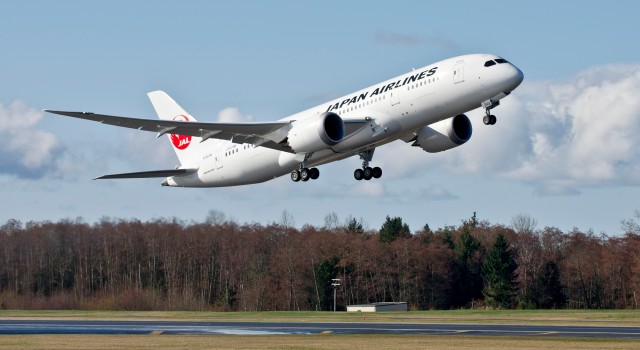
HI RES IMAGE (click for larger). JAL’s Boeing 787 Dreamliner taking off at Paine Field – Photo: Boeing
Last week, Japan Airlines announced that it will begin Boeing 787 service to Vancouver International Airport (YVR) on Monday, February 3, 2014. This will be the first scheduled arrival of a Dreamliner at YVR.
The JAL 787-8 will serve the YVR to Tokyo Narita (NRT) route, and will initially fly once per week on Mondays. Daily service will be in place by March.
We expect to see additional Dreamliner service at YVR this year, most noteably with Air Canada’s introduction of their 787-8 later in the spring. AC’s first of their 37-aircraft order, LN160, is to be registered as C-GHPQ and is currently in Position 2 of the Final Assembly Line at Boeing Everett.
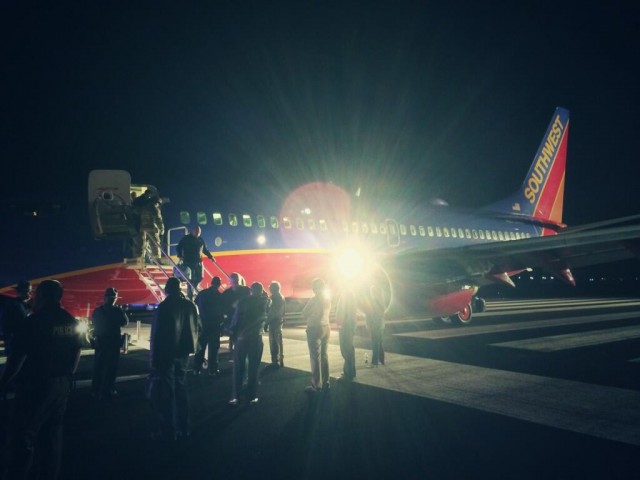
Photo of WN 3014, evacuated on the airfield at the wrong airport! – Photo: Scott Schieffer
Details are still coming in, but according to @scottDallasTX and other media sources, Southwest Flight 3014, from Chicago (Midway) landed at the wrong Branson, MO airport this evening (cause there are tons of Branson airports). Again, details are coming, but it appears they landed at the College of the Ozarks airport (PLK), with only a 3700′ runway. Does anybody know – is that long enough for a 737 t0 take off?
This is strangely reminiscent of the situation last month where a Boeing 747 Dreamlifter, operated by Atlas Air, landed at the wrong airport in Wichita. When fields are in close proximity, mistakes can happen.

Tweet from a passenger on WN 3014 – via Twitter
According to Scott, the landing was efficient, but scary.
More to follow!
Update (7:20PM PDT): It looks like the Southwest Boeing 737-700 CAN take off with this limited runway, albeit likely empty. Expecting a big day tomorrow for internet viewers? (H/T to Managing Correspondent @BigMalX).
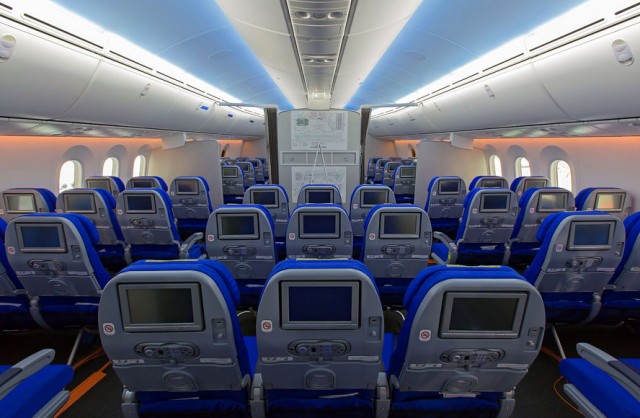
The passenger section of the Boeing 787-9 Dreamliner – Photo: Nick Young | AusBT
Excerpt and photo used with permission from Australian Business Traveller…
Step inside Boeing’s 787-9 Dreamliner ZB002 on this exclusive tour of what is only the world’s second stretched Dreamliner before large-scale production begins ahead of its debut in July with worldwide launch customer Air New Zealand.
Long before any new commercial aircraft takes to the skies with paying passengers on board, manufacturers such as Airbus and Boeing carry out an exhaustive series of flight tests with specially-build aircraft.
The Boeing Dreamliner 787-9, which carries the ZB002 model number, is part of that process for this larger, longer-range version of the original 787-8 Dreamliner.
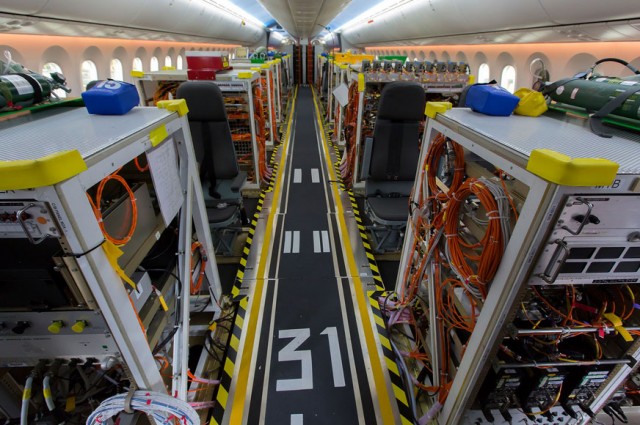
The “Engineering Class” seats on the 787-9 Dreamliner. Notice the runway design on the floor – Photo: Nick Young | AusBT
The second of three 787-9s dedicated to the new plane’s test program, ZB002 last week flew non-stop from Seattle to Auckland ’“ marking the 787-9’s longest flight, at just under 14 hours ’“ and is now visiting Alice Springs, in the centre of Australia, to undergo extensive heat testing under the sizzling summer sun.
So what’s it like inside of of these special test aircraft?
See many more GREAT 787-9 interior photos via AusBT…
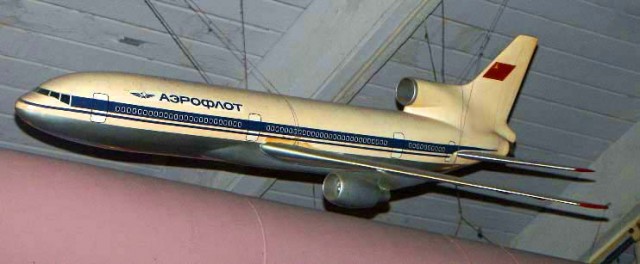
I bet most people thought this was a joke! Photo: Chris Sloan | Airchive.com
The 1970s were a time of economic malaise for the west. Weirdly, the Soviet Union was chugging along at its own egregious and bizarre pace, and Soviet air travel needs had never been more pressing. Millions of Warsaw Pact and Soviet citizens needed to shuttle around the Iron living room. In fact, Aeroflot celebrated its hundred-millionth-passenger year in 1976. This called for larger aircraft. Engine technology issues were holding up Ilyushin’s domestic design, which we now know as the mostly-extinct IL-86.
The program to which the IL-86 stemmed from was formally known as the “aerobus”. The IL-86 was not supposed to be the only aircraft of the family of short, medium, and long-haul indigenous widebody aircraft.
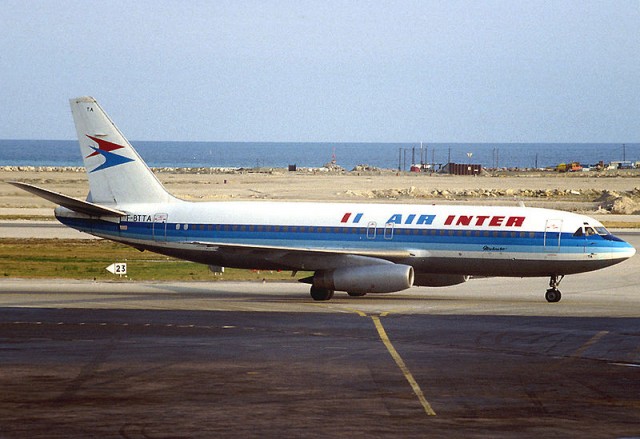
Believe it or not, Tupolev almost built a similar aircraft (but widebody) to the Dassault Mercure. Photo: Alain Durand
Tupolev had stepped up to offer the Tu-184, an aircraft that was similar to a twin-aisle Dassault Mercure. Thankfully, at the time of its inception Andre Tupolev was still alive. He took one look at it and decided that the company should not waste any resources on what he was sure would be nothing but a reputation-wrecking disaster. Not that Tupolev was immune to civil aviation failures, they are simply beyond the scope of this article. They were also, usually, swept under the rug and blamed on Myashischev (a competing design bureau).







